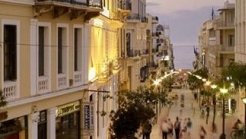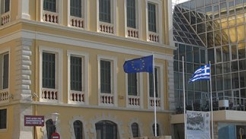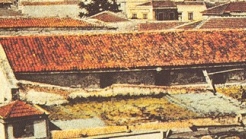

Greece
The paleontological collection of the Municipality of Rethymnon, which consists of findings from excavations from all over the prefecture by German scientist Siegfired Kuss (University of Freiburg), will form the basis of the exhibition. The Goulandris foundation has been looking after this collection in collaboration with the University of Athens (Historical Geology and Palaeontology Faculty).
The paleontological Museum Rethymno is located in area Mastambas, mosque Beli Pasha. It is believed that the mosque was built on the Venetian church of San Onoufrios. It has some unique features such as the main door and the minaret which is the oldest in Rethymnon (1789).
Garden 2.5 acres, have already planted trees and plants which flourish in Crete such olive trees, carob, Cretan palm trees, oleanders and laurels and shrubs such as wild rose-trees, will also come across many schinos, Myrties Stone Houses, lavender, diktamo, osier, rosemary and wild lavender.
The paleontological Museum Rethymno mosque Veli Pasha opened on July 10, 2008.


It is a paved road that leads from the Lions Square to the 18 British Square on the port. During the Venetian period was a very important street because in this were the Loggia, the Basilica of St. Mark, the Ducal Palace and the Palace of the Admiral.


The Historical Museum of Crete is the presentation of the history of Crete from the early Christian era to younger times. The company Cretan Historical Studies founded the museum in 1953. which presents the most modern methods of museum education throughout the history of Heraklion from early Christ


The katholikon of St. Francis monastery was one of the greatest temples of Venetian Candia. When Candia fell to the Turks in 1669, the temple was converted into an imperial mosque dedicated to Muhammad the Conqueror, the conqueror of Constantinople.
1039 Ε 6061 01515 00